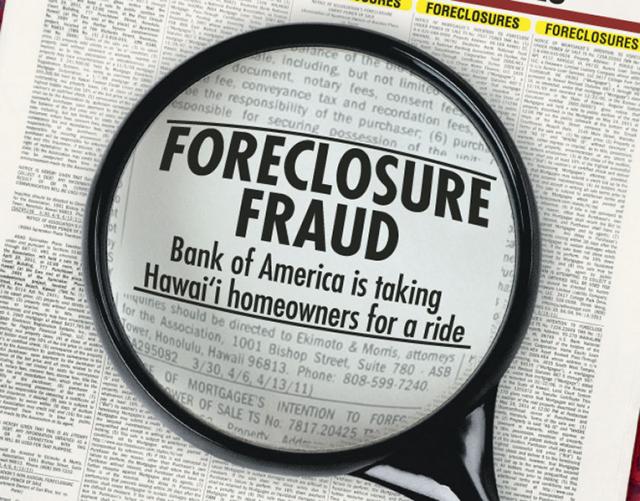Search
Democracy Links
Member's Off-site Blogs
from the naughty corner .....

In the face of widespread evidence of illegal foreclosure practices, federal regulators in 2011 told the big banks to investigate themselves.
The banks had to hire consultants to review foreclosures in 2009 and 2010. If violations were found, they were supposed to reimburse wronged borrowers “as appropriate.” Regulators pledged to ensure that the reviews would be comprehensive and reliable. In practice, it was left up to banks to decide what constituted wrongful foreclosure and appropriate redress.
Not surprisingly, after spending an estimated $1.5 billion on consultants, the banks have found little wrongdoing and provided no meaningful relief. Equally unsurprising, regulators will let the banks off with a wrist slap for their failure to execute credible and effective reviews.
This week, the Federal Reserve and the Office of the Comptroller of the Currency reached a deal with 10 banks under which the regulators will end the reviews and the banks will instead provide $8.5 billion in aid to borrowers. Of that, $3.3 billion is earmarked for cash payments to borrowers who lost their homes and $5.2 billion is for loan modifications and other help for borrowers currently at risk of foreclosure.
Regulators have said that the goal in ending the reviews is to provide relief to borrowers “in a more timely manner.” If it’s timely relief they wanted, they would not have instituted the deeply flawed review process in the first place, nor would they have let the sham reviews drag on for more than a year. Worse, the settlement amount is inadequate.
Since there are no reliable analyses to identify wronged borrowers — which was the ostensible purpose of the self-reviews — there is also no clear way to apportion the $3.3 billion among 3.8 million borrowers covered by the settlement. Some borrowers may get big sums while others get nothing, or millions could receive token payments. But given the extent of foreclosure abuses and the amount of money available, the individual reimbursements will be paltry compared with the harm of losing one’s home in an abusive process. If, say, half of the potentially eligible borrowers received a payment, each would get roughly $1,700 on average.
The $5.2 billion in antiforeclosure aid is potentially even more problematic. Details are not yet available, but, presumably, a bank will receive credit toward its obligation for various forms of assistance — say, a dollar’s worth of credit for every dollar by which it reduces the balance on an underwater loan or a lesser amount for every dollar of payment it postpones for unemployed borrowers. A similar formula, currently being used to enforce a separate mortgage settlement struck between banks and government officials in 2012, has yielded troubling preliminary results. It appears, for instance, that much of the aid is going to higher-income borrowers, even though the housing bust disproportionately hurt low-income communities.
For the new settlement to have any credibility, regulators must appoint an independent monitor with full authority to oversee, analyze and publicly report on the deal’s enforcement.
In the meantime, the only hope for lasting change rests with the Consumer Financial Protection Bureau, which is expected to issue new rules shortly to rein in the risky and abusive mortgage practices of banks.
What’s needed are rules to ensure that lenders face legal consequences if they structure and promote loans that fail because of lax underwriting. Rules are also needed to ensure that all eligible borrowers facing foreclosure can receive modifications according to specific, publicly available criteria. If foreclosure is unavoidable, a bank must provide borrowers with proof of its legal right to foreclose before the process gets under way.
The bureau cannot undo the past, but strong rules could at least help to ensure that the past is not repeated.
- By John Richardson at 9 Jan 2013 - 1:39pm
- John Richardson's blog
- Login or register to post comments
Recent comments
4 hours 20 min ago
9 hours 38 min ago
12 hours 6 min ago
12 hours 18 min ago
12 hours 23 min ago
14 hours 26 min ago
14 hours 32 min ago
15 hours 27 min ago
18 hours 23 min ago
19 hours 11 min ago